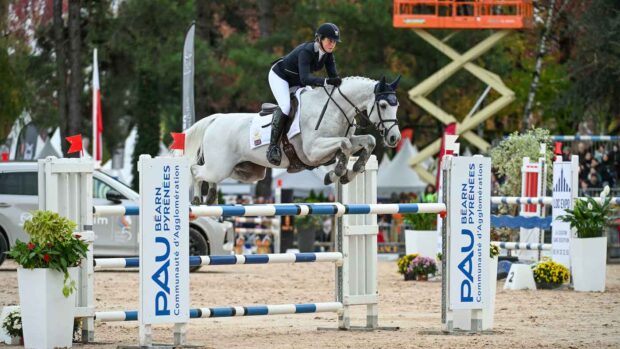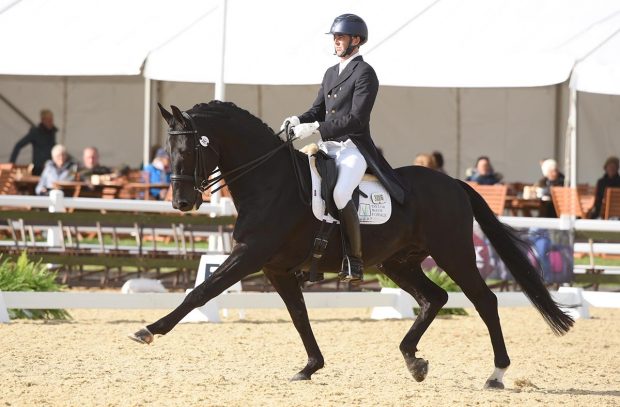Mare owners will usually select a stallion based on characteristics such as temperament, performance and conformation. But this is a pointless exercise if your mare is unlikely to conceive or the stallion’s fertility is in question.
Stallion fertility cannot accurately be predicted by any single physical characteristic. In fact, it is very difficult to classify stallions as of excellent, average or poor fertility. In many cases, the numbers of coverings on which these figures are based are too low to be able to reach a valid conclusion.
A recent article for vets stated that an average pregnancy rate for a stallion based on fewer than 75 mares is almost meaningless in predicting whether a mare will become pregnant after one or two cycles of breeding. And there are few stallions being used for natural covering or artificial insemination in the UK who cover more than 75 mares per year.
Nonetheless, the industry needs to have a working definition of a satisfactory breeding stallion. In general, such a stallion must be free of potentially heritable defects, behavioural disorders and transmissible diseases. He should have no physical traits that would interfere with mating ability, semen quality and sperm output. There should be at least 1.1 billion live sperm per ejaculate for the stallion to be considered as having adequate fertility. Most stallions should be considerably in excess of this.
For stallions involved in an AI programme, the most important factor for producing a good shipment of semen is the quality of the raw ejaculate. The total number of sperm per insemination dose to maximise fertility rates is unknown in the horse, and probably varies in individual stallions. However, the horse breeding industry has adopted 500 million sperm per dose for fresh semen and 1 billion sperm per dose when shipping semen.
Despite the difficulty in interpreting stallion fertility data, mare owners would be well advised to find out as much as they can about the previous record of the stallion in terms of pregnancy rates achieved.
There is an extensive set of fertility data prepared by Weatherbys for Thoroughbred mares at stud both in the UK and Ireland. A range of statistics is available, including live foal rate. The accuracy of the data does depend on the quality of information sent in by mare owners, but this is considered accurate and the numbers involved mean reliability can be given to the data in many cases.
Artificial insemination
When using artificial insemination techniques, there are two main areas where mare owners have difficulty in deciding which stallion to choose based on the likelihood of obtaining a pregnancy:
- In most cases there is limited or no independent data available on pregnancy rates for particular stallions. In many other countries, mare owners send in details of the result of the artificial insemination and this data is collated at the end of the season and available for inspection. Due to the lower numbers of mares inseminated per stallion in the UK, this data would have shortcomings, but it would give some guidance. If no pregnancies resulted from certain stallion’s semen, this would be useful information to a mare owner.
- There are no minimum standards for the quality of semen shipped around the country from stallions. In the Netherlands, for example, all stallions have to have semen analysis carried out before they are accepted into the artificial insemination breeding programme. While no one can guarantee pregnancy, the mare owner has a right to an acceptable quality of semen being sent for their mare.
Problems are most likely to occur with chilled semen. Of course, some problems with courier delivery are outside the control of the stud shipping the semen. Data from our practice over the last two years shows that more than 25% of semen samples failed to arrive before noon the following day after collection, with 6% of semen samples failing to arrive at all.
Mare owners should discuss the semen delivery arrangements with the stud farm shipping it before making a final decision to use their stallion. Certain studs have developed very good relations with courier services and are also experienced in chasing up semen that has gone missing. As ever, nothing beats experience in this situation.
On several occasions in the past two years, after considerable communication with the stud farm shipping the semen, we have been told on the day we requested semen that the stud was unable to collect it. This is unacceptable — if a stud is offering chilled semen and is given plenty of notice of requirements, it should be able to ship semen on the requested day.
If the semen does arrive, the two main problems have been:
- Inadequate paperwork. Individuals shipping semen must send an information sheet. This should include date and time of collection; name, breed and health status of the stallion; progressive motility of the semen sample; volume of semen shipped; number of sperm per dose and a contact phone number. Semen arriving from the continent MUST have health papers with the delivery. We warn clients in advance that we will not inseminate mares if semen arrives from continental Europe without health papers.
- Poor quality of the semen sample. Semen intended for shipping should be diluted so that the final sperm concentration is between 25 and 50 million/ml. High-volume ejaculates of low sperm concentrations (less than 100 million/ml) should be centrifuged so that a soft sperm pellet is formed and reconstituted in an appropriate volume of extender.
It is very difficult for a mare owner to ascertain the quality of shipped semen. Sadly, the industry does not have minimum standards or an independent monitoring system to ensure standards are maintained. Many studs do an excellent job of shipping good-quality semen, but mare owners need to be advised that there are many potential problems.
In conclusion, the mare owner must factor in the likely chance of success from breeding to whichever stallion they have chosen for their mare. If the mare fails to become pregnant, the choice of stallion is irrelevant.
This veterinary feature was first published in Horse & Hound (29 June 2006)



